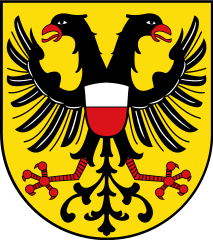Alright, let's Start.
Free Imperial City of Lübeck
In 1226 Emperor Frederick II declared the city of Lübeck to be a Free Imperial City. Lübeck law was the constitution of the city's municipal form of government developed after being made a free city. In theory, Lübeck law made the cities which had adopted it independent of royalty. In the 14th century Lübeck became the "Queen of the Hanseatic League", being by far the largest and most powerful member of this medieval trade organization. Though Lübeck's power slowly declined after involving in the Count's Feud in 1530s and the the Hanseatic League lost importance because the new transatlantic orientation of European trade, Lübeck still remained an important trading town on the Baltic Sea after the de facto disbandment of the Hanseatic League in 1669.
Free Imperial City of Nuremberg
After Nuremberg gained piecemeal independence from the Burgraviate of Nuremberg in the High Middle Ages and considerable territory from Bavaria in the Landshut War of Succession, it grew to become one of the largest and most important Imperial cities, the 'unofficial capital' of the Empire, particularly because Imperial Diets and courts met at Nuremberg Castle. The Diets of Nuremberg were an important part of the administrative structure of the Empire. The Golden Bull of 1356, issued by Emperor Charles IV, named Nuremberg as the city where newly elected kings of Germany must hold their first Imperial Diet, making Nuremberg one of the three highest cities of the Empire. With the cultural flowering in the 15th and 16th centuries, Nuremberg also became the center of the German Renaissance.
P.S.
@Ceg
you have said that the Franconia province has been divided into Franconia and Sachsen, but I also remember you had mention the Rhenish province in a post many years ago. Is Rhenish province still exist? If it is the list need some adjustment.







 Reply With Quote
Reply With Quote
Bookmarks